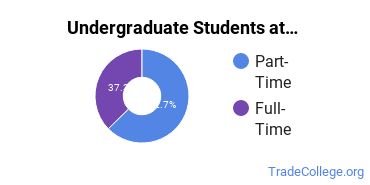Great Falls College Montana State University Trade Programs
Great Falls College Montana State University is a public institution situated in Great Falls, Montana. The location of the school is great for students who enjoy the amenities of city life.
Featured schools near , edit
Where Is Great Falls College Montana State University?

Contact details for Great Falls College Montana State University are given below.
| Contact Details | |
|---|---|
| Address: | 2100 16Th Ave S, Great Falls, MT 59405 |
| Phone: | 406-268-3700 |
| Website: | www.gfcmsu.edu |
Can I Afford Great Falls College Montana State University?
| In State | Out of State | |
|---|---|---|
| Tuition | $2,947 | $11,272 |
| Fees | $957 | $957 |
| Books and Supplies | $1,400 | $1,400 |
Student Loan Debt
Almost 66% of college students who graduated with the class of 2018 took out student loans, but that percentage varies from school to school. At Great Falls College Montana State University, approximately 47% of students took out student loans averaging $5,016 a year. That adds up to $20,064 over four years for those students.
Great Falls College Montana State University Undergraduate Student Diversity

Gender Diversity
Of the 478 full-time undergraduates at Great Falls College Montana State University, 32% are male and 68% are female.

Racial-Ethnic Diversity
The racial-ethnic breakdown of Great Falls College Montana State University students is as follows.

| Race/Ethnicity | Number of Grads |
|---|---|
| Asian | 5 |
| Black or African American | 4 |
| Hispanic or Latino | 25 |
| White | 375 |
| International Students | 0 |
| Other Races/Ethnicities | 69 |
Great Falls College Montana State University Trade School Concentrations
The table below shows the number of awards for each concentration.
| Major | Basic Certificate | Associate’s | Undergraduate Certificate | TOTAL |
|---|---|---|---|---|
| Welding Technology/Welder | 16 | 13 | 28 | 57 |
| Dental Hygiene/Hygienist | 0 | 21 | 0 | 21 |
| Surgical Technology | 0 | 18 | 0 | 18 |
| Physical Therapy Assistant | 0 | 15 | 0 | 15 |
| Licensed Practical/Vocational Nurse Training | 0 | 0 | 15 | 15 |
| Health Information Management | 0 | 10 | 0 | 10 |
| Health Information/Medical Records Technology/Technician | 0 | 0 | 9 | 9 |
| Emergency Medical Technology/Technician (EMT Paramedic) | 0 | 8 | 0 | 8 |
| Dental Assisting/Assistant | 0 | 0 | 5 | 5 |
| Energy Systems Technology/Technician | 0 | 2 | 0 | 2 |
| Industrial Technology | 0 | 0 | 2 | 2 |
| Respiratory Care Therapy | 0 | 0 | 0 | 0 |
| TOTAL | 16 | 87 | 59 | 162 |
References
*The racial-ethnic minorities count is calculated by taking the total number of students and subtracting white students, international students, and students whose race/ethnicity was unknown. This number is then divided by the total number of students at the school to obtain the racial-ethnic minorities percentage.
More about our data sources and methodologies.
Featured Schools
 Request Info
Request Info
|
Southern New Hampshire University You have goals. Southern New Hampshire University can help you get there. Whether you need a bachelor's degree to get into a career or want a master's degree to move up in your current career, SNHU has an online program for you. Find your degree from over 200 online programs. Learn More > |
